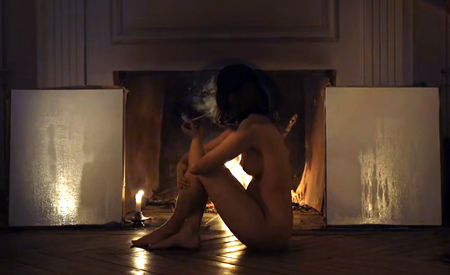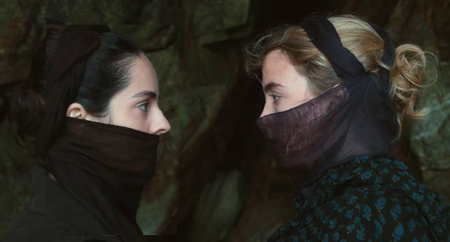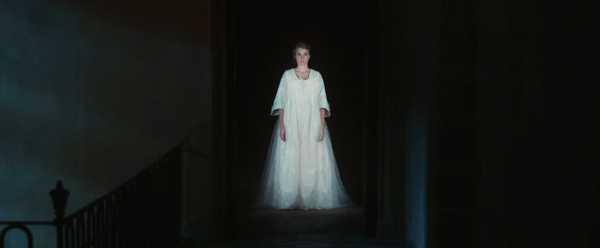
“Portrait of a Lady on Fire” by Céline Sciamma is an emotionally dense film, but of an exquisite subtlety, masterfully elaborated, which, speaking to us of an impossible love, speaks to us of painting, of the role of women in eighteenth-century society, of the effect of music and, without doing so, also of photography.
History highlights the importance of looking and being looked at, the ethical and aesthetic implications of who looks and observes, and the transformations that both the observer and the observed undergo with each new look. As if we were talking about the quantum world, the facts, in practice, may depend on the observer.
From the beginning, Marianne, a painter who in order to be able to exhibit her paintings, as a woman, must sign them with her father’s name, is commissioned to make a portrait of Héloïse, to be sent to her future husband, so that he accept, seeing him, the marriage commitment agreed upon by his mother.
The fidelity of the portrait, 50 years after the invention of photography, is transcendental, but this portrait must will have to be done in secret because of the rejection of it, and the rejection of the marriage itself, by Héloïse.
Apart from being awarded the best screenplay at the Cannes Film Festival, the film’s photographic sensitivity, a real gift, with the subtle delicacy of gestures and looks and the landscapes that remind us of Turner or Friedrich, has received the 2019 award for Best Picture at the New York Critics Circle.

The importance of looking, of the looks, will be a constant throughout the film, Marianne’s furtive glances, to try to make the portrait with the memories of what she has seen, the face of Héloïse hidden by the hood and anticipated in his first appearance, the looks, with the masks put on to protect himself from the wind, (which by the way, a few months later have become everyday).

The film also talks about women, sorority and again also about looks and photography that come together again in the sequence of the abortion of Sophie, the maid, where Héloïse when Marianne turns her face orders her “Look! ” emphasizing the importance of looking straight ahead at what is happening to save memory. After the operation, overwhelmed, he asks Marianne to draw a picture of the abortion they have witnessed, a way to remember the experience, as if it were a documentary photograph.
L’amor entre les dues protagonistes, impensable a l’època, apareix poc a poc, dins el joc de confusions i sThe love between the two protagonists, unthinkable at the time, appears little by little, in the game of confusion The love between the two protagonists, unthinkable at the time, appears little by little, in the game of confusion and seduction to get the portrait, and finally erupts when they come to face each other after Héloïse agrees to pose for painting. By the way, disappointed by the result of the first painting (“Is that how you see me?” – says Marianne).
Mirada A look that as she makes clear by detailing Marianne’s tics in anguish, is reciprocal, “If you look at me, who am I looking at?” and it generates a new, intense, innocent, and highly erotic love, with this absolute desire for the body but also for the affection of the other person that is not possession and is not only desire.
As the time approaches to say goodbye, Héloïse complains that Marianne will take the drawings, she will have the image of Héloïse, but she will not be able to remember her, and then she asks for an image of her.
Marianne will draw a self-portrait that will leave her with memories and that she draws contemplating her reflection in the mirror placed just above the sex of Héloïse, an explicit way of telling us how the mistresses look and recognize each other right through the body of the other, the gaze of the other, or rather, by one’s own gaze reflected in the body of the other.

(Because there is nothing more intimate than the look, nothing more liberating (and in some way contentious) than deliberately choosing what one wants to observe and how one wants to do) – Cinedivergente-Retrato de una mujer en llamas.
The drawing is made in his book, a book that is supposed to be “Metamorphosis” of Ovid, where they have read the myth of Orpheus and Euridice, the two together with Sophie, discussing whether what Orpheus turned be impatient or a voluntary act of dismissal, … (… “he decides not as a lover but as a poet” […] “maybe she was the one who said to him: Turn around!“) .. .. Héloïse will invoke him when he says goodbye, when assuming that he will not return from the marriage from the stairs he asks Marianne “Turn around!”.

However, the book used in the film does not actually exist.
Page 28 was created especially for the film. When we look at page 28, at the top of the page you can read “OVIDE LIV. X”, which is the book of Orpheus and Euyridice. The text on page 28 is from the end of the tenth book called “Orpheus Sings: The Death of Adonis.”
The text translates roughly: “this flower that is blooming lasts a short time because the winds that made it bloom are also the ones that will make it fall.”
In fact, it is very similar to the reality of the two regarding portraiture and marriage, which is what has united them, but at the same time, portrait and marriage is what will finally separate them.
Nothing is left to chance, … it seems that choosing page 28 had to do with the age of both.
On his last night, his eyes again, … “Do you close your eyes? … don’t fall asleep, don’t fall asleep, ……“
In the end, closing the circle, Marianne ends up watching Héloïse in the theater without being seen, as when she started watching her without Héloïse realizing it to make her first portrait.

L’The importance of the looks reminds me of something I raised I think of Richard Feynman, in a similar way to this:
You can have a young body, old, beautiful, ugly, strong, … but you, who really are you, we could say that you are your mind, your brain, which is almost completely shielded by the skull, with only two holes : one for the spinal cord, to communicate with the inside of the body, and the other the eyes, connected via optic nerve and allow communication with the outside.
When you look at an object, photons, light particles, travel from the object to the retina, and its electrons, converted into electrical signals, reach your brain.
Looking someone in the eye allows for a physical, real, brain-to-brain connection.
That is, … that it is possible to have more “fun” contacts,…. but hardly more intimate
As a curiosity to emphasize that the deep work elaborated on the relation between “muse” and artist, has been influenced by the fact that the director Céline Sciamma wrote the work thinking (and in collaboration) with her ex-partner and col · Regular worker, Adèle Haenel, (l’Héloïse), and that in a way reflects the confidence and complexity of their own relationship, like themselves have commented.
Another interesting review at El espectador imaginario.
